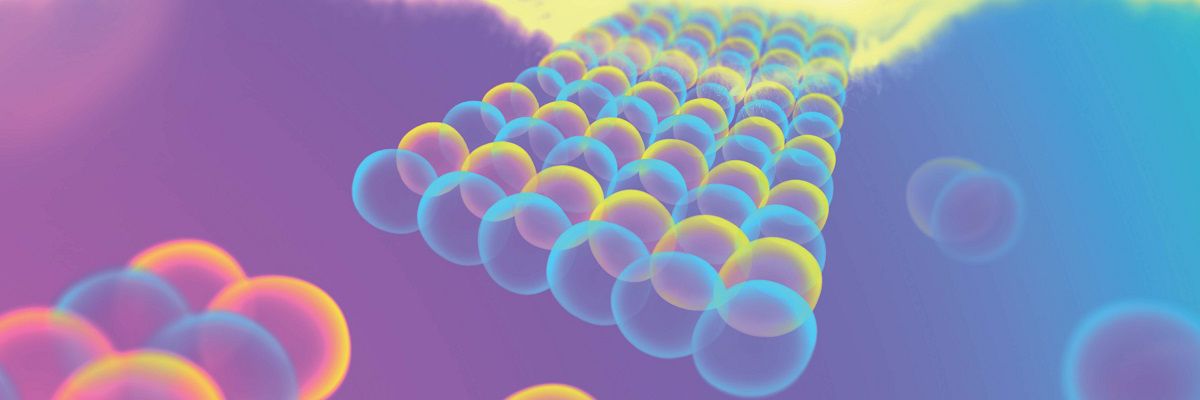
Self-assembly of the cytoskeleton can be influenced by electrical pulses
02. 12. 2019
Scientists from the Czech Academy of Sciences have discovered a completely new way of influencing the self-assembly of nanoscopic building blocks - proteins - into cytoskeleton structures, using very short and intense electrical pulses. Noteworthy about this discovery is that pulses can fundamentally affect the nanoscopic shape of the formed structure, either reversibly or irreversibly, depending on the pulse parameter settings.
This discovery has an impact on the development of new bionanomaterials and can lead to new electromagnetic procedures in biomedical therapeutic methods, such as cancer treatment. The discovery was published in the prestigious scientific journal Advanced Materials.
“Short electrical pulses are used in experimental and clinical medicine, for example, for electrochemotherapy,” explains Michal Cifra, head of the Bioelectrodynamics research team of the Institute of Photonics and Electronics of the CAS. His researchers are co-authors of the new discovery. The aim of their research team is to find new electromagnetic approaches that will make biomedical and bionanotechnological procedures more efficient and gentle in the future.
A relatively new direction of research is to use very short, nanosecond pulses. Djamel Eddine Chafai, a team member, has discovered that these pulses could directly affect proteins, nanoscopic building blocks self-assembling into more complex cell structures. “No one has thought before of looking on the use of these pulses beyond their classic research fields, in bionanotechnology,” emphasizes Michal Cifra.
Three institutes of CAS - four different nationalities
The discovery was made through a cooperation of Czech research institutions associated in the Czech Academy of Sciences. In addition to the Institute of Photonics and Electronics of the CAS, the Institute of Molecular Genetics of the CAS and the Institute of Physiology of the CAS also participated. “The authors of the discovery at these three different sites of the Academy of Sciences are scientists of four different nationalities. This clearly shows how important is multidisciplinary cooperation today and how science is being internationalized in the Czech Republic”, comments Jiří Homola, director of the Institute of Photonics and Electronics of the CAS, on the success of the international team.
Self-assembly is a process in which a set of disordered particles spontaneously orient themselves into an ordered pattern or functional structure without external force, only by local interactions between the particles themselves. Self-assembly and self-organization of simpler blocks into more complex units are the design principles of living cells and organisms. Inspiration by these biological principles is also a hot topic in nanotechnology, where it allows the creation of nanoscopic devices and nanorobots. Self-assembly ability is usually influenced chemically and the effect is often irreversible.
The figure shows how the conformation of tubulin is affected by nanosecond electric pulses. The new conformation then determines whether tubulin assembles, and how fast, into microtubules or other nanoscopic structures. This approach opens up new possibilities in the control of biomolecule self-assembly as well as in bio-inspired materials.

The figure shows how the conformation of tubulin is affected by nanosecond electric pulses. The new conformation then determines whether tubulin assembles, and how fast, into microtubules or other nanoscopic structures. This approach opens up new possibilities in the control of biomolecule self-assembly as well as in bio-inspired materials.
Chafai, Djamel Eddine, Vadym Sulimenko, Daniel Havelka, Lucie Kubínová, Pavel Dráber, and Michal Cifra. “Reversible and Irreversible Modulation of Tubulin Self‐Assembly by Intense Nanosecond Pulsed Electric Fields.” Advanced Materials, 31(39) 2019, 1903636.
https://doi.org/10.1002/adma.201903636.
Prepared by: Petra Palečková, Jana Olivová, Institute of Photonics and Electronics of the CAS
Photo: 2019 WILEY‐VCH Verlag GmbH & Co. KGaA, Weinheim
Read also
- Public Hearing: “Making Sense of Open Science”
- SUNER-C concludes after three years dedicated to the renewable energy future
- A trapped state: The pandemic impact on public attitudes, trust, and behavior
- Aerial archaeology: Tracing the footsteps of our ancestors from the sky
- Archaeologists uncover ancient finds along Prague Ring Road
- Our microbiome largely depends on what we eat, says microbiologist Michal Kraus
- The ABCs of writing: Why did its invention mark a turning point for humankind?
- We learn, remember, forget… What can memory actually do? And can we outsmart it?
- New Center for Electron Microscopy in Brno opens its doors to global science
- The hidden lives of waste: What can we learn from waste workers and pickers?
The Czech Academy of Sciences (the CAS)
The mission of the CAS
The primary mission of the CAS is to conduct research in a broad spectrum of natural, technical and social sciences as well as humanities. This research aims to advance progress of scientific knowledge at the international level, considering, however, the specific needs of the Czech society and the national culture.
President of the CAS
Prof. Eva Zažímalová has started her second term of office in May 2021. She is a respected scientist, and a Professor of Plant Anatomy and Physiology.
She is also a part of GCSA of the EU.